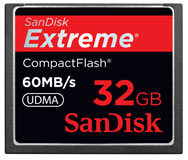
The camera market is a complicated place: technologically fast-moving, ubiquitous but hierarchical, and with blurred lines between professional and amateur. It has to fulfil a variety of different needs and market itself across a broad spectrum of consumers. This is no easy feat, and right now, I'm not convinced that the manufacturers are getting it right. Some consumers are falling through the cracks, manufacturers are trying too hard in some areas but seem to be oblivious of their strengths in others. It's time for a consolidated camera market fit for the 21st century.
The smartphone battle has been lost...
It's a truth, perhaps sad but definitely undeniable, that camera manufacturers have lost their battle to prevent a certain chunk of picture-takers defecting from compact cameras to smartphones. It is also a truth, probably even more sad and still undeniable, that they are refusing to acknowledge their defeat. You only have to look at the vast range of gimmicks that are being bolted on the constantly refreshed, garishly coloured swathe of compact cameras being churned out by everyone from Nikon to Panasonic to see that they are desperately scrabbling around for something, anything, that will convince the Smartphone-istas that a compact camera is what they need.
But for people who record their every coffee and croissant and subsequent pee and burp on Facebook, their smartphone is just what they need. They don't need a bright pink point-and-shoot with 12 filters and a dodgy wi-fi connection. Instagram is enough.
They've flown and they're not coming back. Get over it and move on, because trust me, there are people out there who really do want compact cameras.
... but there remains a market for compact cameras
So who are these mythical individuals still in the market for compact cameras? Well, they're not necessarily as trendy and it is likely that they're smaller than the share lost to Apple, Nokia, and Samsung, but they are real. So if you're listening Canon, Fujifilm, Nikon, Olympus, Panasonic, Pentax, Sony, et alios, give over, and go where you're wanted and needed.
As I see it, there are three primary consumers for compact cameras. I've written about this before, but indulge me with a recapitulation. First, there are people like me (and probably quite a few of you, too). My primary camera is a dSLR. However, I dislike being without a camera at all, so I want something little to live in my bag, and there are occasions when a dSLR is just too conspicuous, too cumbersome, or too illicit to use. In which case, I want a smaller, lighter, less obviously expensive alternative that enjoys full manual control and a good lens. I have a Canon S95 for this very purpose; other people prefer the Olympus XZ-1, and the Sony RX100 looks a hot new option. These are cameras that help to complete people's photographic arsenals. They are not insignificant.
Second, for people who enjoy recording their exploits up mountains, in deserts, and underwater, a rugged compact is an ideal companion. Tough compacts used to be the laughing stock of the photographic trade; they were cumbersome, badly specced, and resembled something designed for a toddler to teeth on rather than to take photos. Recently, however, manufacturers have been upping their game here and producing cameras capable of taking a decent image in sub-zero temperatures. The advent of the Sony TX200V, a well-specced compact camera that was casually all-weather, has opened up a new direction for compacts, too. You're sniffing at the possibilities here, manufacturers: you'd best run with them.
Finally, there are the people who want a camera that isn't in a phone. People like my parents who enjoy taking photos, who don't need something with interchangeable lenses, but haven't got smartphones and aren't likely to own one, either. People who are learning about photography, especially chidren, who need a dedicated camera, but one that is simple to use and inexpensive. Not everyone wants to use their phone, you see.
I told you, the market might not be as glamourous as the cocktail-sipping Twitterati, but it's definitely there, and it needs to be serviced.
If you want EVIL cameras to be taken seriously, treat them seriously
When I wrote my particularly scathing announcement article for Nikon's J2, one of my Twitter followers asked me why camera consumers aren't taking EVIL cameras seriously. Although the Japanese have embraced EVIL technology (sales of EVIL cameras amount to approximately 40% of the market) sales are much smaller in Europe and the US and might even be stagnating. Why? I'd posit that there are two branches of the same trunk governing this phenomenon: because camera manufacturers don't treat EVIL cameras seriously.
When so much R&D is devoted to EVIL cameras and they are being regarded as the breakthrough technology in photography, this might appear a contrary statement, so allow me to expand.
First, EVIL cameras are marketed poorly. The pace of change in the development of their technology does mean that new iterations are to be expected frequently, but this doesn't always give a great deal of incentive to consumers to purchase a new camera if it is going to be obsolete within six months. If tech lust gets the better of you, perhaps you will upgrade regularly, but when people are laying down in the area of £600 for a camera, they want to be assured that they're getting value for money. If manufacturers were to hold off on the 'release early and release often' principle favoured by coders, and instead release models with significant upgrades at less frequent intervals, consumers might be more tempted to bite. This is a far more sustainable model, economically and environmentally.
Furthermore, this constantly iterative process aligns EVIL cameras more closely with compact cameras, with their fast product cycling and large release numbers, than with flagship dSLR cameras. The product lifecycle for a dSLR is far slower than it is for a compact camera. This lends it gravitas: consumers recognise the research dedicated to developing it, and getting it right, and regard it as an investment rather than something more disposable, more like a compact camera.
At present, Olympus has six PEN models on the market, each with the same Micro Four Thirds, 12 megapixel sensor. I've argued for the benefit of choice quite passionately before now, but choice needs to be meaningful and not present for its own sake. When there is so little to discern the EP3 from the EPM1 or EPL2, it does nothing to suggest that these are carefully considered, designed, developed, and manufactured products. If manufacturers want us to take EVIL cameras seriously, they need to be cycled and marketed on a par with their other 'serious' cameras.
Second: the concept behind EVIL cameras can be overwhelmingly weak. If an EVIL camera is meant to be a serious alternative to a dSLR, fit it with a dSLR-sized sensor. Using a compact camera-sized sensor makes it nothing more than a glorified point-and-shoot; why would I spend £500 on a Nikon J2 or a Pentax Q when I can get similar results from a Canon S100 at £350?
Has Canon cracked it?
When you study the industrial revolution, one the key learning points is how, in the long term, the pioneers of change often suffered for being at the forefront of development. With the majority of their resources devoted to the initial breakthrough technology, the ability to adapt and to adopt refined versions was highly restricted. Sometimes this was a financial limitation, but occassionally, it was an emotional restriction, too: they didn't want to be seen to admit their mistakes or abandon their original technology.
The pace of change meant that second and third generation inventors and adopters often fared much better by biding their time and building on the platforms developed by the pioneers. They had the benefit of a bigger picture, working models, and a lack of emotional investment. *
A version of this model could be applied to the EVIL camera market, and in the words of one of Small Aperture's Twitter followers, it's why Canon has cracked it.
Just over a year ago, I argued that Canon's primary interest is in the video market, not the EVIL one. As a consequence, if it had any desire to play in the EVIL sandpit at all, it would only be if it could rock up and be reigning monarch. Canon had no interest in being seen as a pioneer there, those resources could be better devoted to video, it just needed to produce something good.
By biding its time and watching the constant iterations of EVIL cameras churned out by Olympus, Sony, and Samsung, Canon has been able to hone and refine its product. The result is the EOS M - a camera that is essentially a scaled-down version of the 650D. In terms of concept, what more perfect embodiment of an EVIL camera could you want?
We still love our dSLRs
Will the number of dSLR sales decrease noticeably? In the long run, probably, especially if the manufacturers get the EVIL product right and market it right. There are, after all, only so many photographers to go around. It doesn't mean that demand will disappear to nothing, it just means that camera manufacturers need to be aware of the different groups of people buying their products with different aims in mind. They need to produce to their different needs and market to them appropriately.
As a writer, you are always told to know your audience. Manufacturers need to know their consumer base.
Choice needs to be meaningful; the market must be sustainable
How and why people take photographs has changed; camera manufacturers cannot retroactively influence this by trying to convince the social media crowd that a compact is just what they need when they've found that their smartphone fits the bill. They can't assume that people will flock to EVIL cameras just because they have interchangeable lenses when their tiny sensors don't offer any significant advantage over cheaper and more portable compact cameras. They need to assess where the market is now and project why people will be buying cameras in the future. They need to consolidate their ranges whilst retaining the options that consumers want. They need to start thinking a lot smarter.
As it stands, camera manufacturers are succeeding in cannibalising their own market. Consumers want and need choice, but it has to be meaningful. When it is overwhelming, it serves best to deter people rather than convince them of the benefits of owning both a dSLR and a high-end compact; or an EVIL and to make more use of their smartphone camera. The current approach to R&D and marketing isn't sustainable. It's time for a rethink.
* This is an argument usually applied on a micro level to mill owners, but it can be transfered to a macro level, too.






